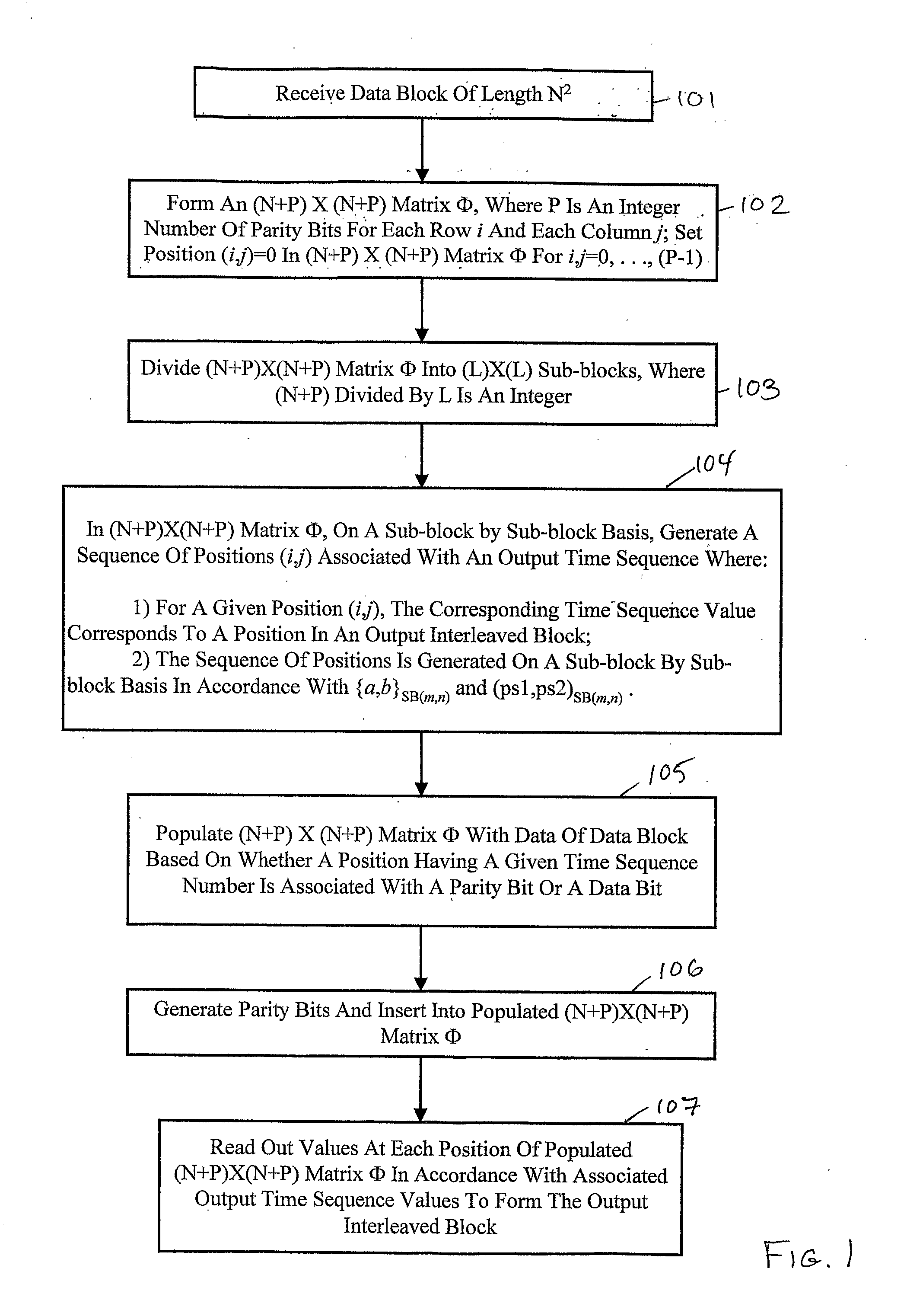Interleaver and De-Interleaver
a technology applied in the field of interleaver and decoder, can solve the problems of reducing the overall system throughput, affecting the accuracy of data transmission, and adding excessive overhead in terms of error detection information
- Summary
- Abstract
- Description
- Claims
- Application Information
AI Technical Summary
Problems solved by technology
Method used
Image
Examples
Embodiment Construction
[0027]FIG. 1 shows a method of interleaving in accordance with an exemplary embodiment of the present invention. Method 100 comprises steps 101 through 107. Steps 101 through 104 might be employed by a designed to generate a mapping for an exemplary interleaver implementation, while steps 105 through 107 might be employed by the exemplary interleaver implementation during operation. A given implementation of a de-interleaver operating in accordance with an exemplary embodiment of the present invention might employ a reverse mapping of the corresponding interleaver mapping (called an inverse mapping). An inverse mapping is readily generated given a mapping generated in accordance with an exemplary embodiment of the present invention.
[0028] At step 101, the method receives a block of data (input data block) having a length of NM, where N and M are positive integers greater than 1. For the exemplary embodiment of FIG. 1, N=M=N2 and the method employs two-dimensional matrices. The bloc...
PUM
 Login to View More
Login to View More Abstract
Description
Claims
Application Information
 Login to View More
Login to View More - R&D
- Intellectual Property
- Life Sciences
- Materials
- Tech Scout
- Unparalleled Data Quality
- Higher Quality Content
- 60% Fewer Hallucinations
Browse by: Latest US Patents, China's latest patents, Technical Efficacy Thesaurus, Application Domain, Technology Topic, Popular Technical Reports.
© 2025 PatSnap. All rights reserved.Legal|Privacy policy|Modern Slavery Act Transparency Statement|Sitemap|About US| Contact US: help@patsnap.com



